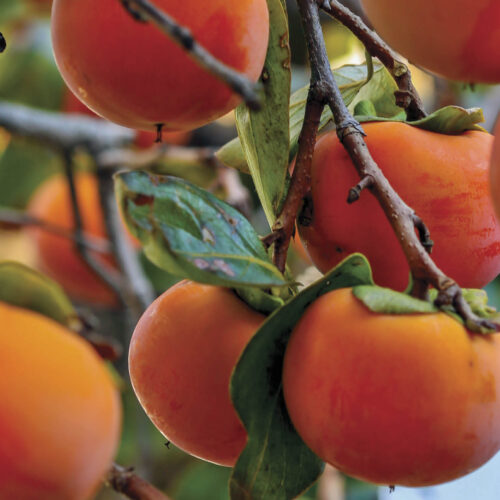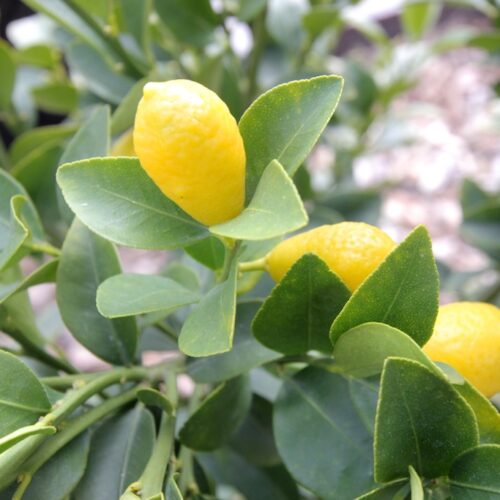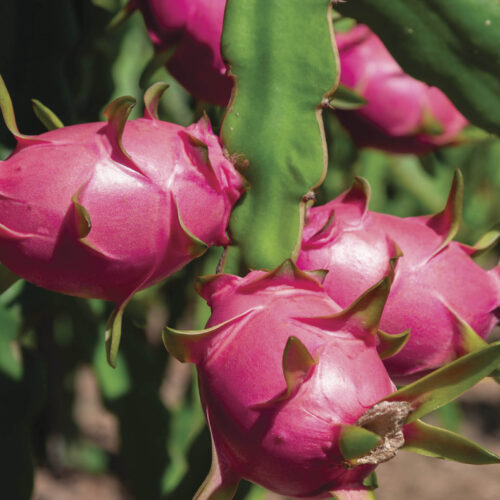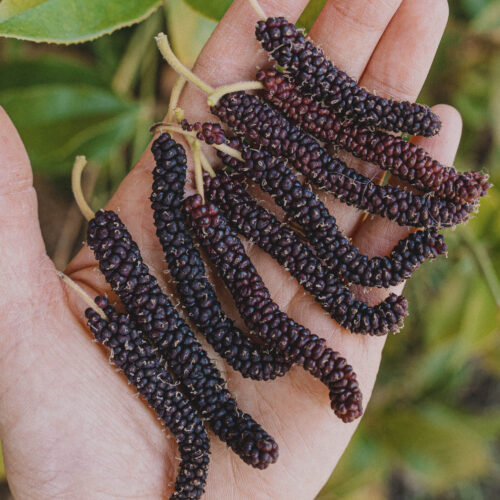Limes
2019-03-22T04:15:06+11:00
Limes have it all: fragrant flowers, glossy leaves, delicious fruit.
Elusive, delectable limes with their fragrant flowers, dark green glossy leaves and delicious fruit are rewarding small trees for gardens in diverse climates. They belong to the Citrus family and like other members of this family, lemons, oranges, grapefruit and mandarins, most limes like frost-free conditions and do best on fertile, well-drained soils with plenty of sun and protection from wind. Remove any weeds or grass growing around the base of trees and mulch well in spring, to stop the shallow roots from drying out in summer. Citrus, including limes, are quite susceptible to collar rot, so make sure the mulch is not touching the trunk.
Citrus come into their own in autumn and in general, limes don’t need much attention: remove any dead wood and branches that interfere with others, add compost and well rotted manure in autumn and spring (up to 5 kg of horse or cow manure per mature tree per year ) and foliar feed by spraying seaweed fertiliser on the leaves several times during spring, summer and autumn. As with other citrus, add iron chelates to the soil if the leaves start to yellow. Limes are particularly good candidates for pot culture and in colder climates this may be the only way they can be grown. Plant in a big tub and move into a sunny courtyard for winter.
Mexican or West Indian limes, Citrus x aurantifolia, are the best limes for more tropical regions. They thrive in warm, moist climates although they will also tolerate drought, and they prefer a slightly alkaline soil. Mexican limes grow as vigorous shrubs or small trees to about 4 metres with slender branches covered in sharp spines (there are now some spineless varieties available). The leaves are aromatic, purple when young, turning to dark green as they mature. The small round fruits are pale green when immature becoming yellow when ripe. The pulp is greenish-yellow, very acid, aromatic, juicy and flavourful. These limes can be grown from seed and are a common backyard plant in tropical countries all over the world in much the same way as the lemon is ubiquitous in temperateAustralian gardens.
Tahitian limes, Citrus latifolia, are believed to be a hybrid between the Mexican lime and the citron (Citrus medica) and probably came originally from Iran. Tahitian limes are the most cold-tolerant of the introduced limes so are the best for temperate regions. They grow as a medium tree (up to 6 metres in ideal conditions), are virtually thornless and have broad, glossy green leaves. The fruit is oval to round and thin skinned, initially a vivid green but turning to yellow when very ripe. The greenish yellow fruit pulp is usually seedless with a delicious acid lime flavour but without the distinctive aroma of Mexican limes. Tahitian limes available in Australia are traditionally grafted onto rough lemon or ‘trifoliata’ rootstock which means that they can be grown in a wider range of soils. Those living in colder regions should opt for those on ‘trifoliata’ rootstock because they can cope with some frost, although no Tahitian lime will tolerate heavy frosts.
The fruits are usually harvested and eaten while the skin is still green, but are equally delicious when yellow. Fresh fruits will keep up to eight weeks in the refrigerator.
Makrut lime, Citrus hystrix, probably originated in Asia and is traditionally thought to ward off evil spirits. This lime grows as a small tree to about 4 m with distinctive double, glossy green leaves and long thorns on the stems. Unlike other citrus, the leaves are the most commonly used part. The fruit are dark green, warty and contain almost no juice. In tropical regions, grow these limes outside in well-drained nutrient-rich soil in full sun. Keep well watered during dry periods. In cooler regions, plant makrut lime in a large pot in a warm sunny position and move to a more sheltered, north-facing position in winter. Leaves can be harvested all year round, and fruit when it ripens.
The leaves have a marvellous, aromatic, citrus scent and a flavour that is unique and cannot really be replaced by other citrus plants. Add a leaf to a dish at the beginning of cooking or shred fresh leaves and sprinkle into salads and cooked vegetable dishes, as well as dishes like beef stir-fry and fish curries. Leaves don’t dry well but they can be kept in the freezer for long periods. Small pieces of rind add a sharp, sour flavour to curry pastes and other dishes.
To find out about Australian native limes click here






